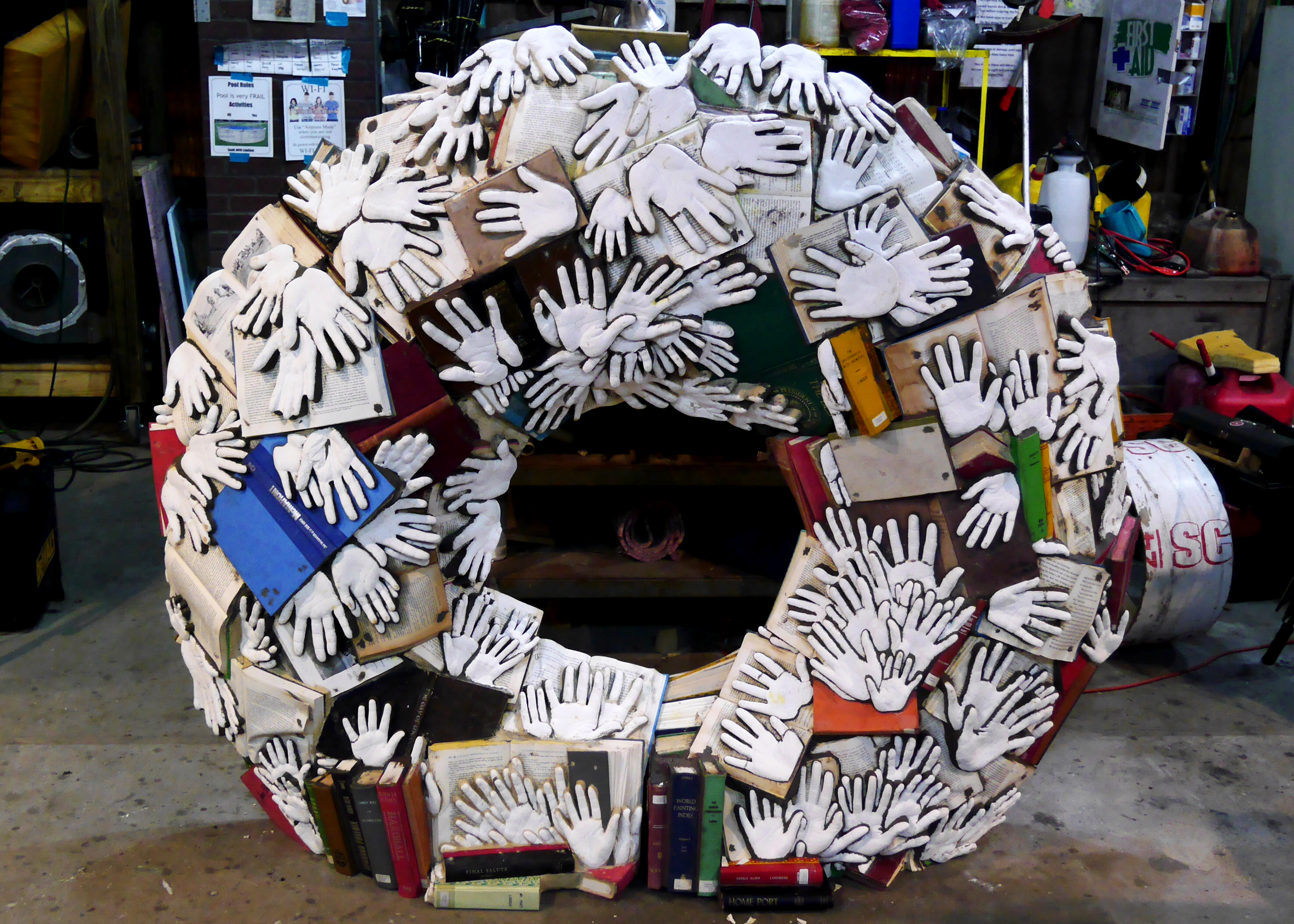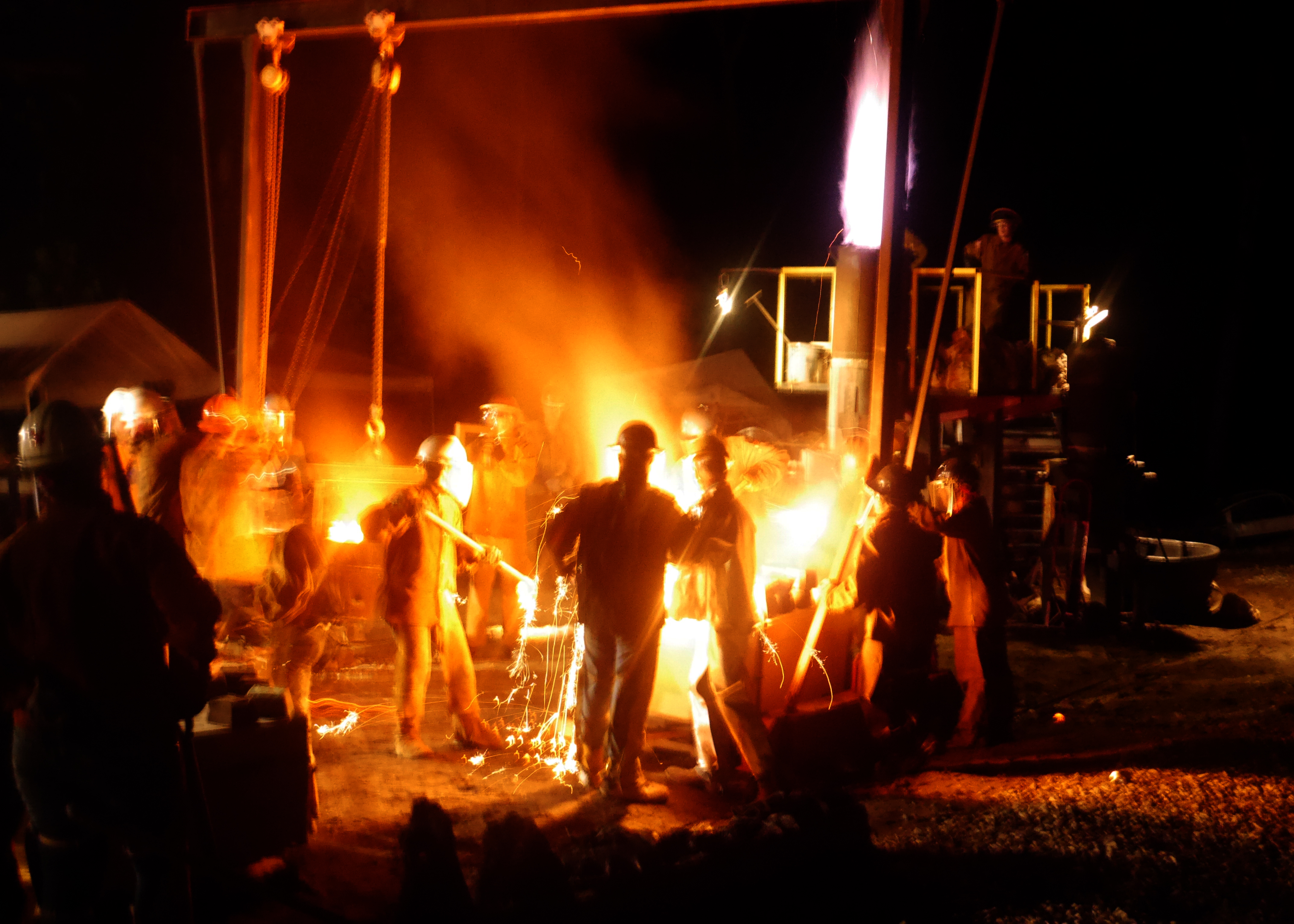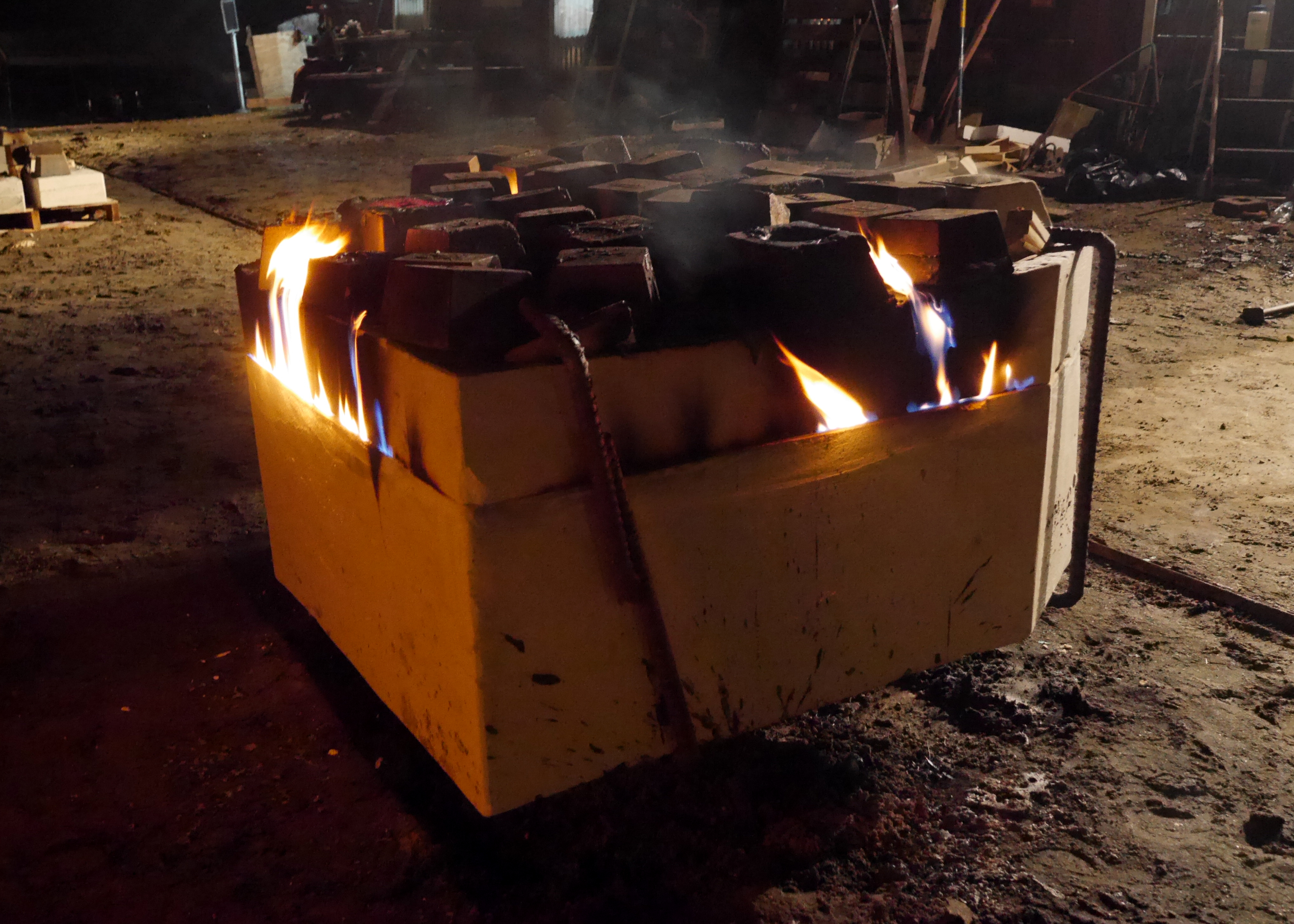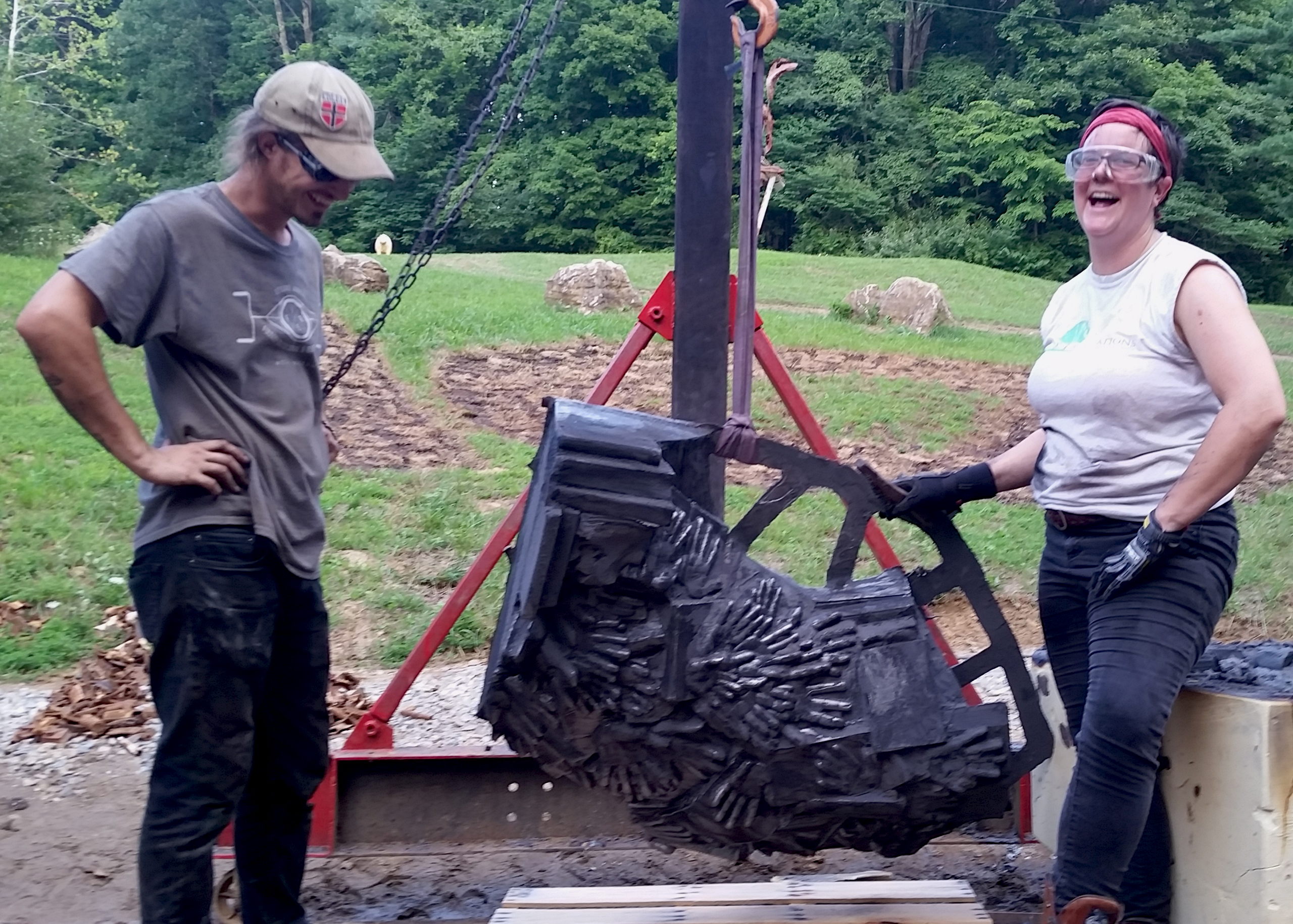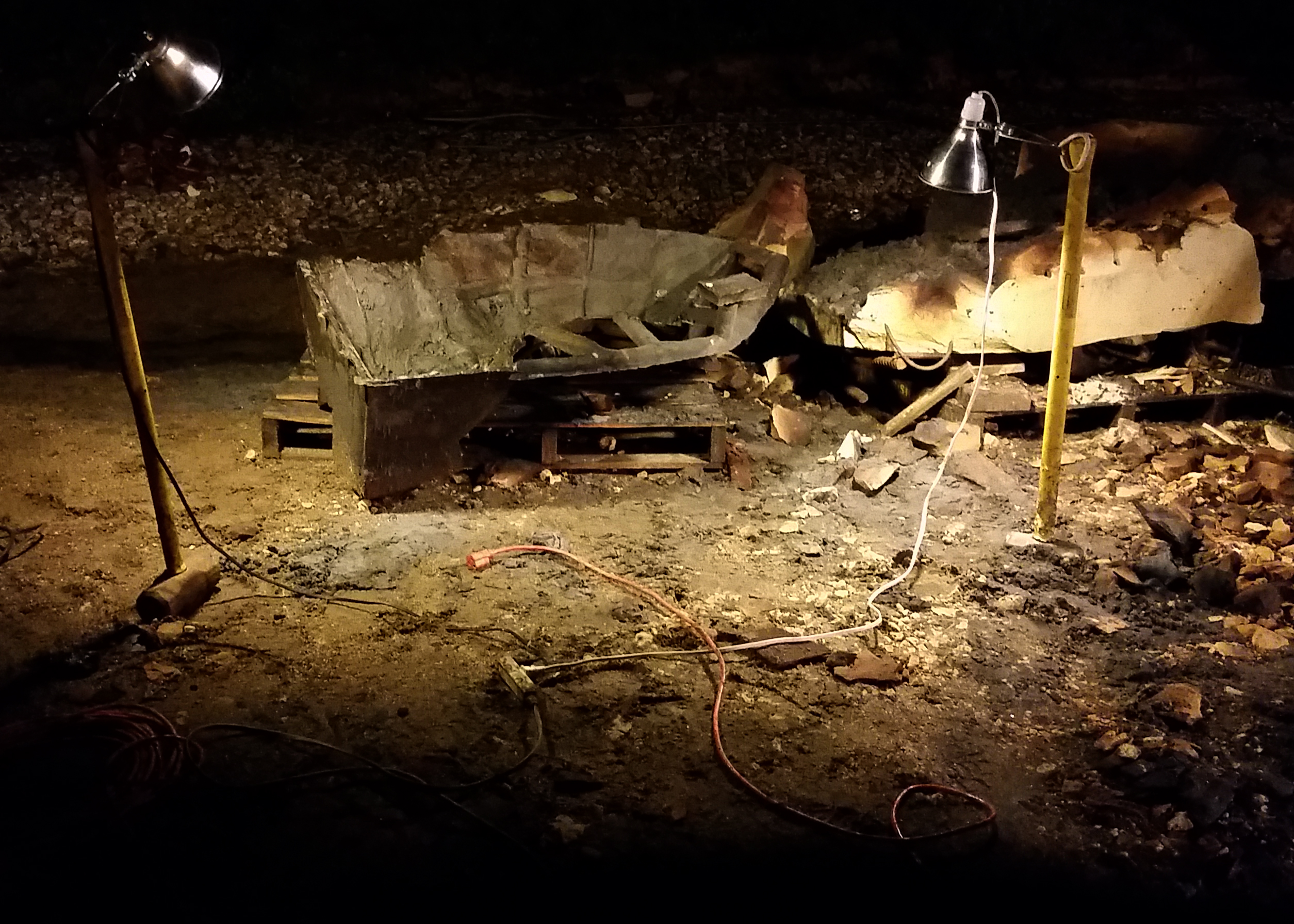



The Eudora Welty Wreath, cast iron, ~5.5’x5.5’x1.5’, 2016
On display now in the Mississippi Museum of Art Garden
Permanent Collection, City of Jackson, MS
PROCESS
The images and video below show the yearlong process behind the creation of the Eudora Welty Wreath, a large scale cast iron sculpture. This project was made possible by a Faculty Development Grant from Millsaps College, an Artist Fellowship Grant from the Greater Jackson Arts Center, and a mini-grant from the Mississippi Arts Commission.
The Eudora Welty Wreath consists of castings of library patrons’ hands and used books. Each hand has unique characteristics and acts as a snapshot of each individual patron as they contribute to the social and cultural fabric of Jackson. I cast the dominant hand, as it is our connection with tools and our sense of the world around us, using alginate. Alginate, an algae based dental casting material, creates a highly detailed negative impression from each person's hand. After each casting workshop, I poured liquid plaster into the alginate negatives which hardened into a positive casting of each volunteer's hand. These multiple textures and histories are now combined into a wreath form that was cast in iron at Sculpture Trails Outdoor Museum in July, 2016.







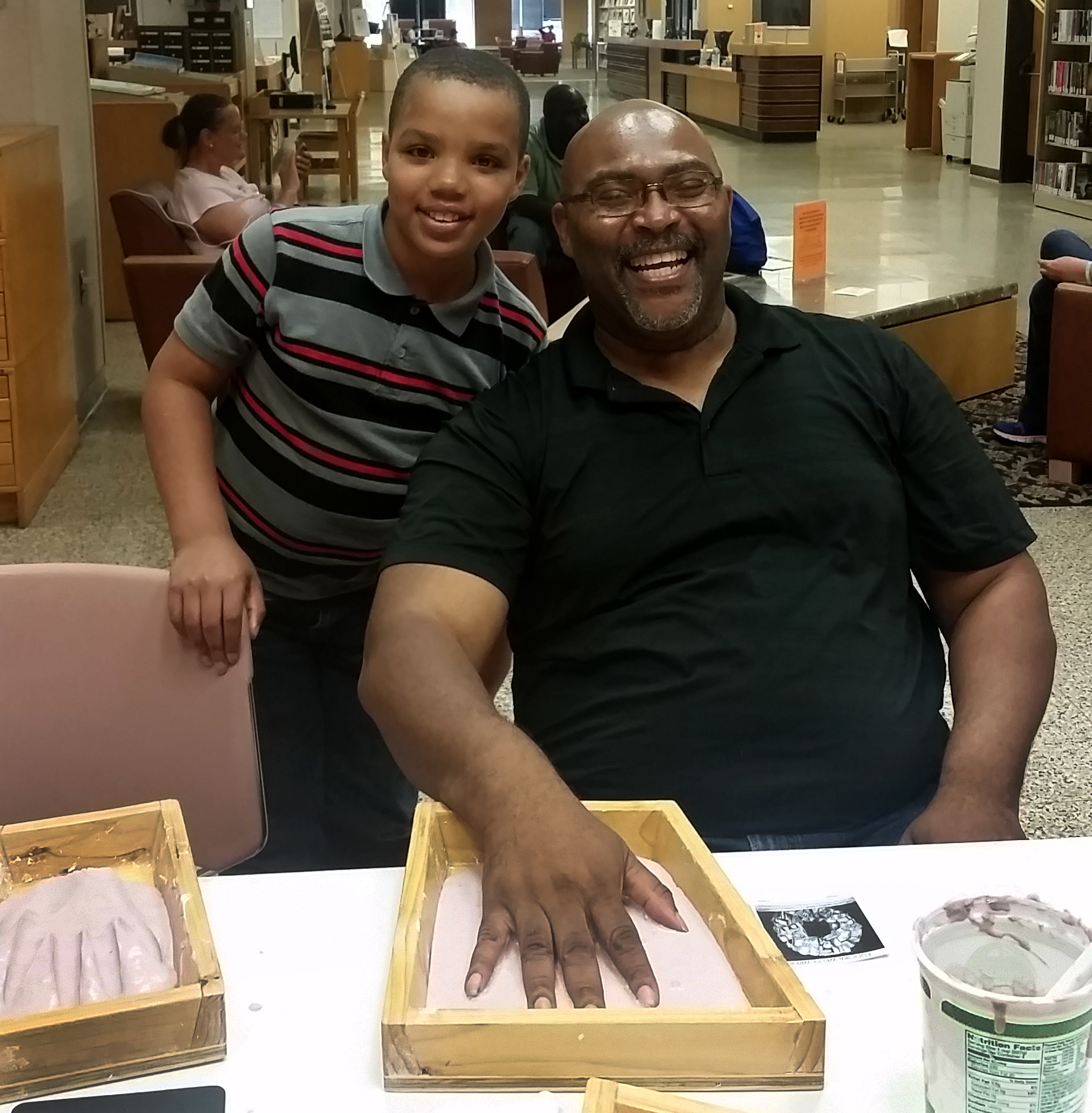



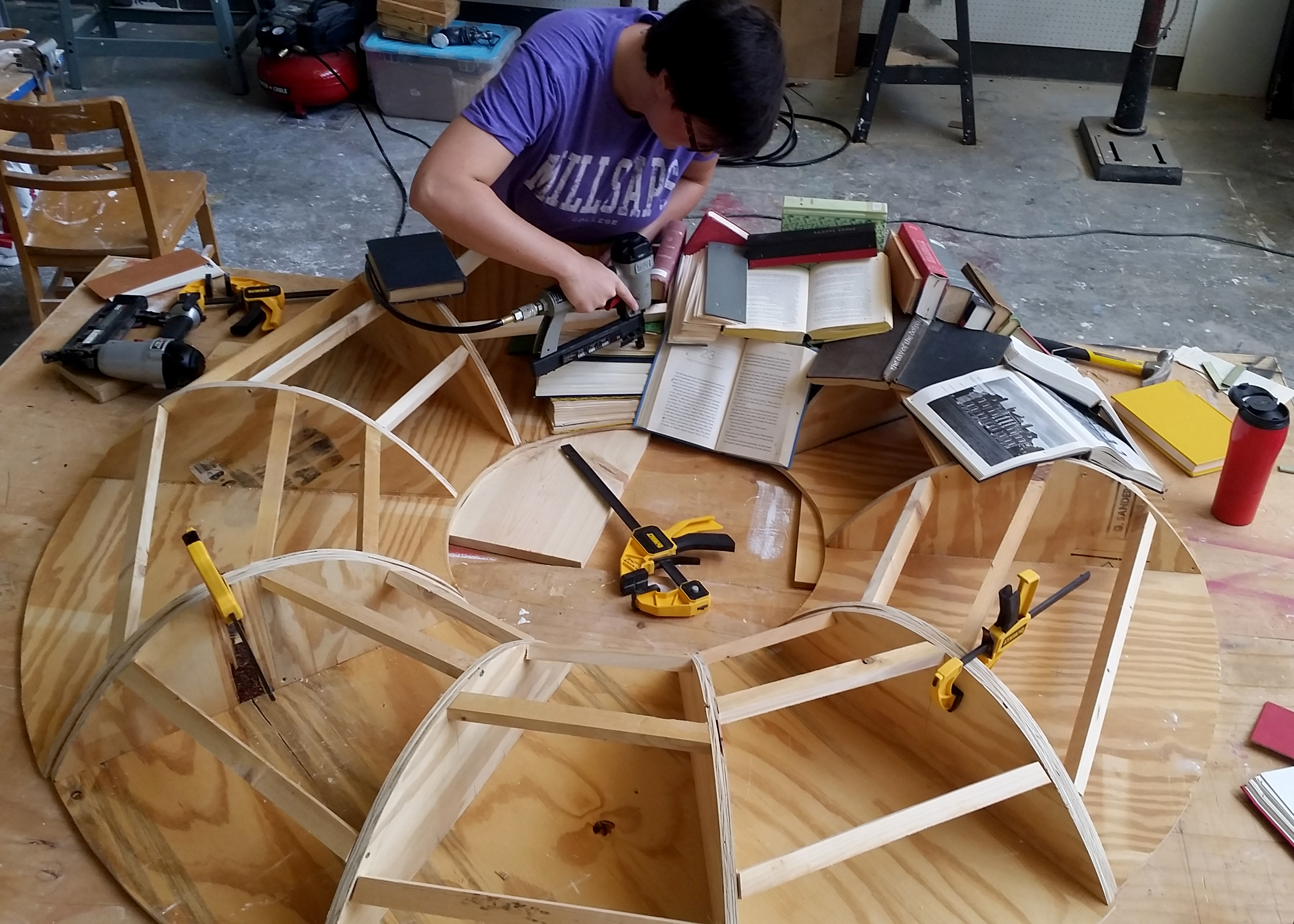




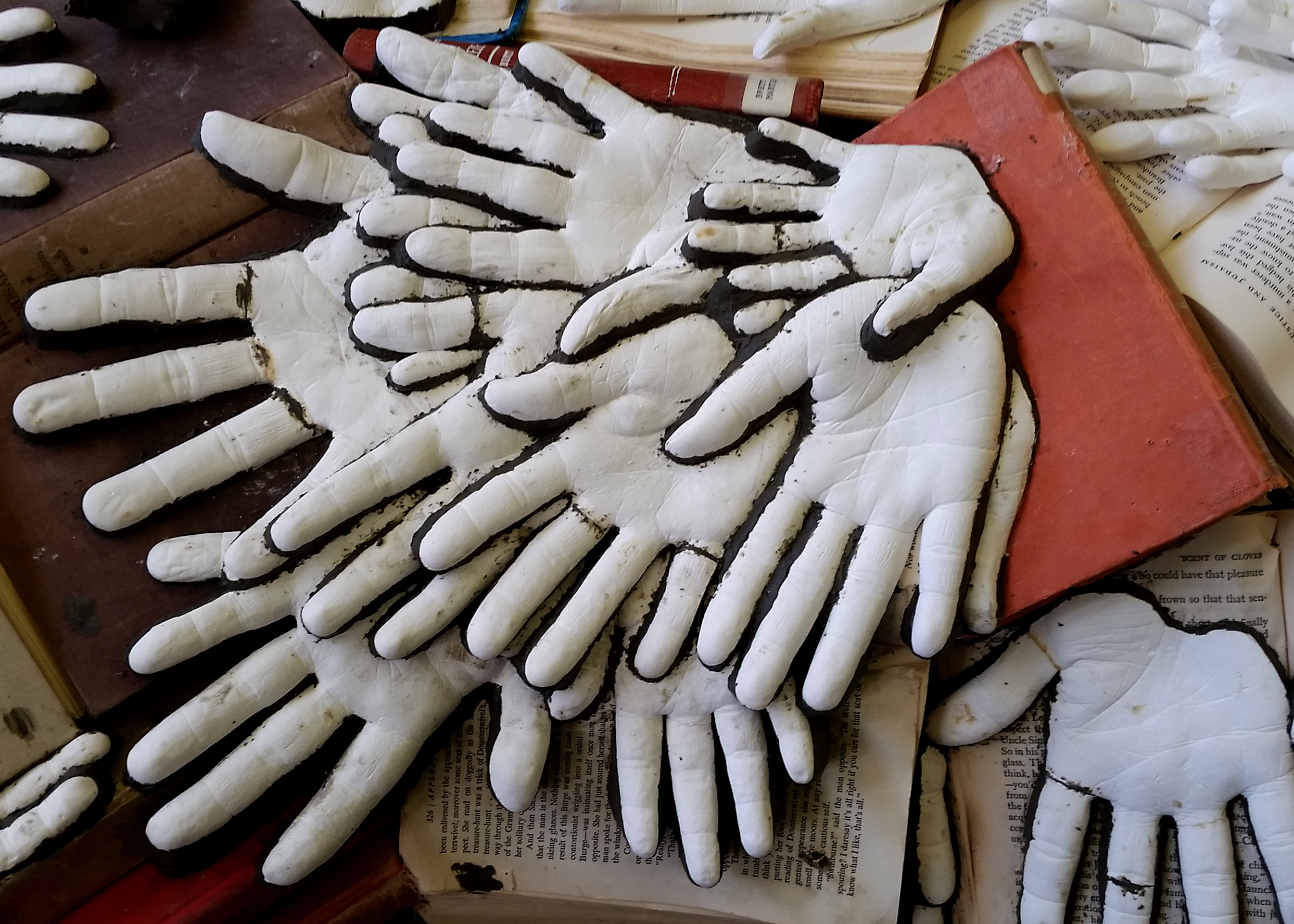



Gerre Masse, the founder and director of Sculpture Trails, was instrumental in the support of creating this sculpture by creating the workspace, materials, equipment, and community required for casting iron. It took a large group of people working continuously for two weeks in order to complete this project from making a mold off of the pattern to a cast iron sculpture. This work would not be possible without the amazing Sculpture Trails community.
